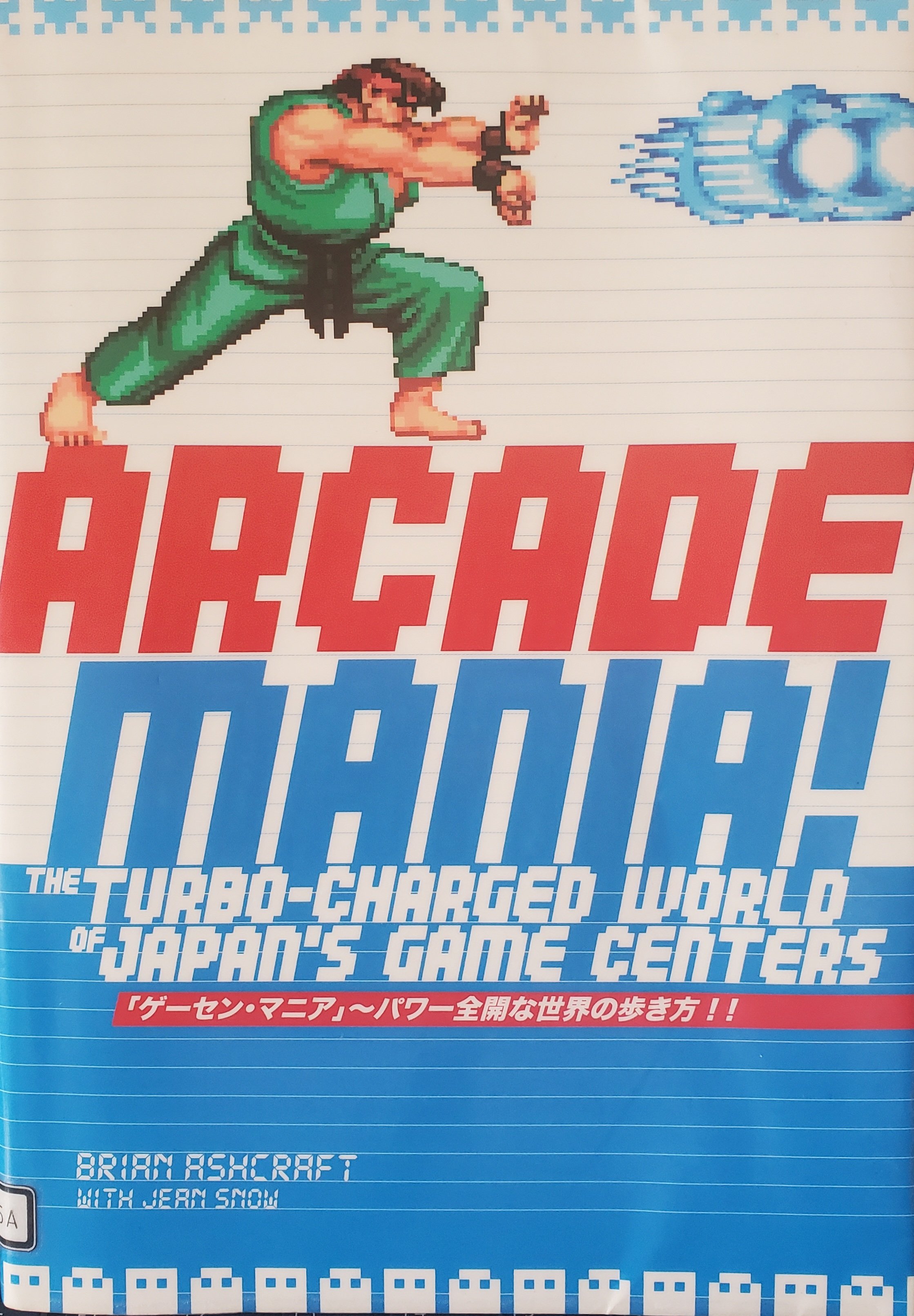Arcade Mania! The Turbo-Charged World of Japan's Game Centers by Brian Ashcroft (Kodansha)
I grew up in the late seventies and early eighties and one of my favorite pastimes was playing video games at an arcade. I remember the first time my friend and I saw our first video game, “Pong,” at a neighborhood pizza restaurant. Although it was a very simple game, we must have played it for over an hour. When I was a university student at the University of Washington, I worked part-time at a place called the College Inn Cafe and located diagonally from the cafe was a 24-hour video arcade called Arnold’s which I also frequented. However, with the advent of home systems, the video arcade soon became a thing of the past.
Imagine my surprise when I spent the summer of 1980 in Japan and discovered there were video arcade cafes. These shops didn’t have arcade games where you stood and played. They were built into the tables themselves. You could order coffee or soda, have a sandwich and while seated, eating and drinking, you could play video games at the table. I thought that was so cool. Another fad was also just beginning in Japan at that time, something called karaoke. Who knew then that that would become a worldwide phenomena?
In 1995, I moved to Japan and wasn’t surprised to not find any video cafes, but taking their place were game centers. These were not one-story building video arcades like there were in the States but some of them could be two, three, or even four-story tall buildings filled with a whole range of games to play.
Brian Ashcroft did his own research and wrote the book Arcade Mania : The Turbo-Charged World of Japan’s Game Centers. Turbo-charged might be an understatement. Ashcroft’s detailed account of the rise and popularity of the Japanese game centers will make you want to experience the sensation yourself. Unlike the pachinko parlors with their noise and smoky atmospheres, the game centers in Japan are more family-friendly.
The game centers in Japan are well-organized. if it’s a multi-story building, on the first floor you would usually find an assortment of crane games. In Japan, these crane games are called “UFO Catchers”, although the term was discontinued sometime in the mid-2000s. What draws people to these games are the different types of prizes they can get. Many of the prizes are limited editions of popular characters. Other prizes may include snack foods. A national crane game championship is held every year as well.
In the nineties, another craze started at the game centers—sticker-picture machines. In 1995, a twenty-nine- year-old woman named Miho Sasaki, who was working for a Japanese arcade game developer called Atlus, saw that home-video editing machines could superimpose titles on pictures and print them out. This gave her an idea. She recalled “her own love of cute stickers when she was younger and how she’d put them all over her notebooks”. Her idea was to mix girls’ love of stickers and their love of taking pictures of themselves. By blending them together, she thought up the idea of the sticker-pictures, but her bosses initially rejected her idea.
At the time, fighting games were all the rage at game centers. Her bosses were salarymen in suits who thought the risk was too large and that a sticker picture machine in a game center would look out of place. However, three months later when Atlus had a new boss, Naoya Harano, he saw the potential of such a concept and thus the Print Club was born. Or as they say in Japan puri kura and by 1996, puri kura was all the rage, especially among high school girls.
The crane games and sticker-picture machines are only the tip of the iceberg when it comes to Japan’s game centers. Ashcroft fills in the reader with the introduction of shooting games, rhythm games, fighting games, and games of chance. He further explores the game center world by talking about dedicated cabinets—“games that are housed in a specific casing and are built especially for the arcade experience”.
It's been nearly thirty years since the introduction of the sticker-picture machines but they are still as popular as ever. Crane games continue to draw in children and adults alike. Now, there are game centers full of retro games that you can still play. These places appeal to adults who find them nostalgic and remind them of their childhood. For kids, there are now card-based games —“a mash-up of playing arcade games and collecting cards”.
The video arcade may be a dinosaur of the past in the U.S. but the game centers in Japan are still thriving and will probably be here to stay for another twenty or thirty years. If you ever make it to Japan, aside from seeing temples and shrines, you should set foot in a game center to see what it’s all about. ~Ernie Hoyt
